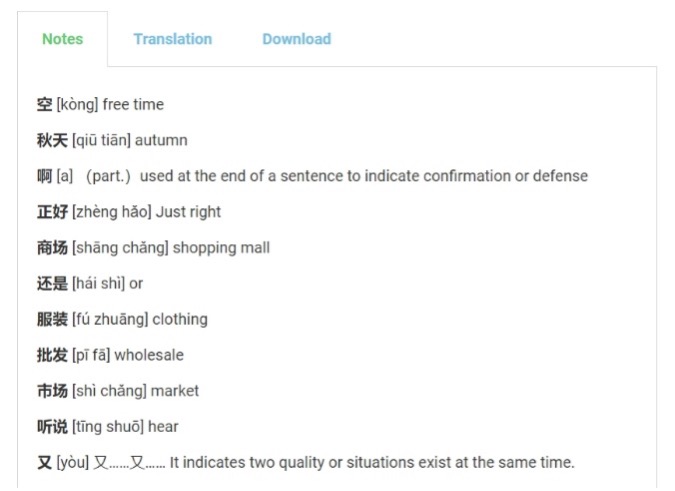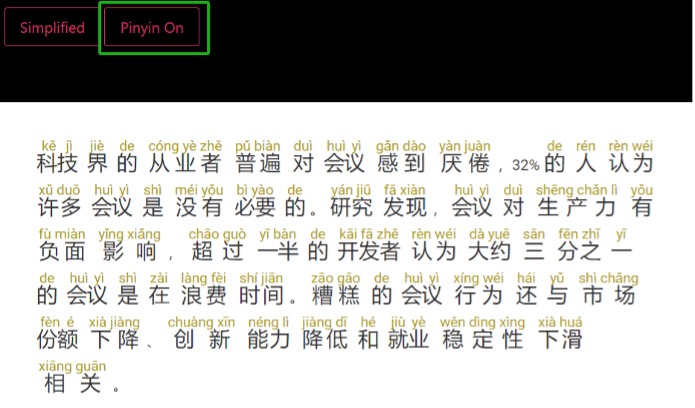Teaching Chinese as a foreign language presents a unique set of challenges and opportunities. As one of the world’s most widely spoken languages, enriched with a rich cultural and historical background, Chinese offers learners a window into a diverse and influential civilization. However, the intricacies of its tones, characters, and grammatical structures can be daunting for new learners. In this article, we will explore various effective strategies and innovative approaches for teaching Chinese. These methods are tailored to meet the diverse needs of students and aim to make the learning process both engaging and rewarding.
1. Start with Chinese Pronunciation
The foundational step in teaching Chinese is to begin with Pinyin. Pinyin serves as an essential tool for learners to understand the pronunciation of Chinese words. It translates Chinese characters into the Latin alphabet, making the initial learning process more accessible. Mastering the tones can be challenging for learners, thus making it vital to integrate tone training early and consistently in your teaching.
The introduction of Pinyin should be interactive and engaging, incorporating a mix of auditory and visual learning methods. Use audio recordings, pronunciation guides, and practice exercises to help students become accustomed to the sounds and different tones of Mandarin. This could include tone-pair drills, tone identification exercises, and practice with simple words and phrases. Emphasize the importance of accurate pronunciation from the outset, as it lays the groundwork for more advanced learning.
2. Emphasize the Importance of Chinese Characters
Many learners of Chinese feel overwhelmed by the complexity of Chinese characters and may give up at the beginning of their learning journey. Unlike alphabetic languages, Chinese is based on a vast array of characters, each representing a word or a concept. To foster a deep understanding and proficiency in Chinese, introducing characters early in the learning process is crucial. Learning Chinese without characters might seem manageable at first, but it becomes a significant impediment to further progress.
Start with the most common characters, gradually increasing both complexity and number. Focus on teaching the radicals — the building blocks of Chinese characters — as they provide clues to a character’s meaning and pronunciation. Linking the characters with their Pinyin and tones helps students make connections between spoken and written Chinese, fostering a more comprehensive understanding of the language. Visual aids like flashcards and character charts can be effective, especially when they illustrate the evolution of a character from its ancient to modern form, highlighting the pictographic and ideographic nature of the language. Encourage students to practice writing characters; the act of writing aids memorization and helps in understanding stroke order and structure.
Remember, patience and consistent practice are key, as mastering Chinese characters is a gradual and rewarding process.
3. Graded Reading Practice
Incorporating graded reading practice into the curriculum can significantly enhance the effectiveness of teaching Chinese. This approach aligns well with resources like graded reading content. Graded reading provides learners with materials suited to their current language proficiency level. This method enables students to progressively build their reading skills, starting from simple texts with basic vocabulary and grammar and gradually advancing to more complex language structures and themes. MandarinBean, known for its extensive library of graded reading materials, serves as an excellent resource in this context. Its materials are systematically categorized by difficulty levels, making it easier for teachers to choose texts that align with their students’ abilities.
Teachers should consider several steps when using this reading content.
1). Set a Reading Target
Begin by evaluating each student’s current proficiency in Chinese. This assessment is crucial for determining the appropriate level of reading material. Once the level is identified, introduce texts that offer a slight challenge but are not overly difficult. This strategic selection helps keep students engaged and motivated, preventing feelings of being overwhelmed or under-challenged. As students progress, methodically introduce more complex texts. Graded reading is effective as it allows students to learn and understand new vocabulary and grammar in context, rather than relying solely on memorization.

2). Pre-read with Vocabulary Notes
Before tackling the main text, guide students through the vocabulary notes section. These notes typically highlight selected words that might pose comprehension challenges. Familiarizing students with this vocabulary beforehand can significantly reduce reading hurdles, making the overall experience smoother and more enjoyable.


3). Skimming with Comprehension Questions
Prepare comprehension questions in advance and instruct students to turn off the Pinyin feature for this exercise. Have them skim through the text quickly, using these questions as a guide. This approach efficiently gauges their initial understanding and identifies areas that may require further clarification. It’s common for students to encounter difficulties during the first reading, but this process reveals their weak points, guiding subsequent teaching steps.
4). Intensive Reading with Pinyin
After the initial skim, encourage students to pose their own questions about parts of the text they found confusing. Turn the Pinyin back on and go through the content sentence by sentence, providing detailed explanations of grammar and vocabulary. This approach enables a deeper understanding of the material and helps students grasp the language’s nuances.

5). Listening and Shadowing Reading
Play the audio of the text with Pinyin on, and engage students in shadowing reading, where they mimic the audio’s pronunciation and intonation. This practice enhances their listening and speaking skills. Then, have students independently translate the content and compare their translations with the provided version. This exercise not only tests their understanding but also improves their translation skills.


6) Practice Through Discussions and Comprehension Exercises
To further solidify learning from reading sessions, incorporate interactive activities such as discussions and comprehension exercises. These allow students to engage more deeply with the text, enhancing their understanding of its content. Structure discussions around the themes or cultural aspects presented in the reading material, encouraging students to express their opinions and thoughts in Chinese. This improves conversational skills and helps apply new vocabulary and grammatical structures in a real-world context. Comprehension exercises can include questions about specific details, main ideas, or inferences from the text, aiding in the development of critical reading skills.
7) Review and Reinforcement
Regular review sessions are essential for long-term retention of learned material. Encourage students to read aloud and use the audio materials provided with each article. This practice reinforces correct pronunciation and intonation, critical components of spoken Chinese. Additionally, periodic reviews of past reading materials are beneficial. Revisiting texts after some time assesses whether students still remember key grammatical structures and the usage of specific words. These reviews can take various forms, such as Quizlet quizzes, summarization tasks, or re-creating dialogues or stories using the learned vocabulary and structures. The goal is to keep the content fresh in students’ minds and reinforce their learning, ensuring a thorough and lasting grasp of the language.
Regular practice with graded reading, especially with a diverse and well-structured resource, can significantly improve students’ reading comprehension, vocabulary, and overall fluency in Chinese.
4. Incorporate Cultural Context
Incorporating cultural context into Chinese language teaching is enriching and crucial for a comprehensive understanding of the language. Begin by integrating discussions about traditional Chinese festivals, such as the Spring Festival (Chinese New Year), Mid-Autumn Festival, and Dragon Boat Festival. These discussions provide a vibrant backdrop for introducing new vocabulary and expressions while also giving students insights into the customs, stories, and values that these festivals embody. Explaining the significance of traditional practices, foods, and symbols associated with these events is essential, as understanding these cultural nuances can deepen students’ connection to the language. Additionally, exploring aspects of daily life in Chinese-speaking regions can make the learning process more relatable and engaging. Discuss topics like traditional and modern Chinese cuisine, popular sports and pastimes, and the significance of calligraphy and tea culture. Such discussions not only broaden the students’ cultural understanding but also provide real-life contexts in which the language is used.
5. Embrace Techniques and Use Interactive Materials
Teaching Chinese can be greatly enhanced by embracing immersive techniques and using interactive materials. An effective strategy is to encourage constant practice in listening and speaking. Achieve this by integrating a variety of multimedia resources, such as videos, music, and movies in Chinese, into the curriculum. These resources provide a rich source of authentic language usage and expose students to different accents and cultural nuances. Furthermore, incorporating interactive and engaging materials can significantly boost the learning experience, especially for younger learners. Games and flashcards are excellent tools for memorizing vocabulary and phrases, while interactive apps can offer a fun and engaging platform for practicing grammar and pronunciation. The gamification of learning through these methods can lead to higher motivation and better retention. Additionally, language learning apps, online resources, and social media platforms offer abundant opportunities for students to practice and learn.
6. Regular Testing, Revision, and Feedback
Incorporating regular quizzes and feedback sessions is a pivotal component of teaching Chinese effectively. These assessments serve as important tools for tracking student progress and identifying areas that require additional focus. To comprehensively evaluate student proficiency in Chinese, it is essential to create assessments that encompass all facets of the language: written, oral, and listening. These varied forms of assessments provide a well-rounded picture of a student’s language abilities and help tailor future lessons to address any weaknesses. Moreover, feedback sessions following these assessments offer invaluable opportunities for students to understand their mistakes, ask questions, and receive personalized guidance on how to improve.
Consistent revision and practice form the bedrock of language acquisition. Encourage students to regularly revisit previous lessons, reinforcing their learning and cementing their grasp of earlier topics. This revision can take various forms, such as quick recaps at the beginning of each class, flashcard reviews, or re-engagement with past exercises and texts. It’s also beneficial to integrate new vocabulary and concepts into different contexts, allowing students to see how language elements can be applied in a variety of ways. This practice not only reinforces past lessons but also builds confidence in using the language in various scenarios.
7. Encourage Language Application
To enhance the practical application of Chinese learning, suggesting ways for students to incorporate the language into their daily lives can be remarkably effective. One simple yet impactful approach is to encourage students to label everyday items in their homes with their Chinese names. This constant visual exposure helps in memorizing vocabulary relevant to their daily environment. Another engaging method is to have students maintain a diary in Chinese, where they can write about their daily experiences, thoughts, or even practice new grammatical structures and vocabulary. This not only improves their writing skills but also helps in internalizing the language as part of their daily routine. Additionally, engaging in conversations with native speakers, whether through language exchange platforms or community groups, provides invaluable practice in real-life communication, aiding in the development of fluency and the understanding of cultural nuances.
Group activities and pair work are also essential in fostering communication skills and making the learning process more interactive and enjoyable. Organize role-plays that simulate everyday situations, allowing students to practice conversational Chinese in a controlled yet realistic setting. Group discussions on various topics, from cultural aspects to current events, can stimulate critical thinking and encourage the use of Chinese in expressing complex ideas. Collaborative projects, where students work together to research, prepare, and present on a topic in Chinese, can be particularly effective in developing teamwork and language skills.
8. Tailor to Learner Needs
Students come with diverse objectives and backgrounds, necessitating a flexible and adaptive teaching approach. MandarinBean’s extensive range of reading materials, spanning various topics and difficulty levels, enables teachers to tailor content to align with their students’ interests and goals. For instance, business professionals learning Chinese may benefit from a curriculum emphasizing formal language skills, including industry-specific vocabulary, professional email writing, and nuances of business etiquette in a Chinese context. For these students, integrating case studies, analyzing business news, and role-playing in business scenarios can be particularly advantageous. Conversely, travelers or those interested in casual conversation might find more value in focusing on everyday conversational skills, common travel phrases, and cultural nuances vital for social interactions. Their lessons could include daily conversations in typical travel scenarios, discussions about travel experiences in Chinese-speaking countries, and learning through interactive travelogues. For students preparing for the HSK, incorporating grammar illustrations and exercises for all HSK levels is beneficial for breaking down complex grammatical concepts and enhancing understanding. Furthermore, integrating HSK online mock tests into the curriculum is invaluable. These tests not only acquaint students with the exam format and effective time management but also enable teachers to evaluate progress and pinpoint areas that need more attention.
From leveraging modern technology to incorporating cultural elements, these methods aim not only to enhance language proficiency but also to deepen learners’ appreciation and understanding of Chinese culture. Whether teaching business professionals, travelers, or students preparing for proficiency tests like the HSK, these strategies will equip you with the tools to create a dynamic and comprehensive learning experience. Remember, each student has a unique learning style, so it’s important to remain flexible and adjust your methods as needed. Encouraging a supportive and interactive learning environment will also help keep students motivated and engaged on their language learning journey.

